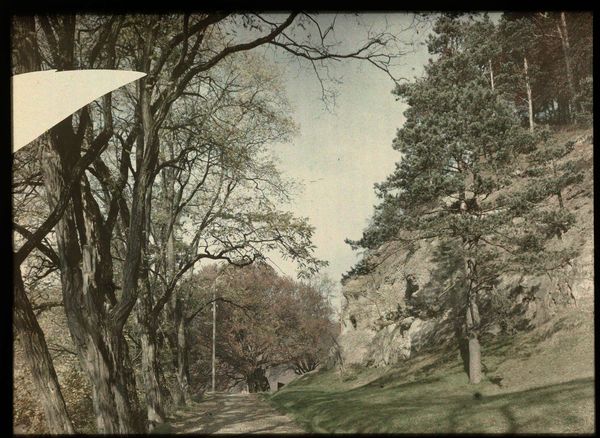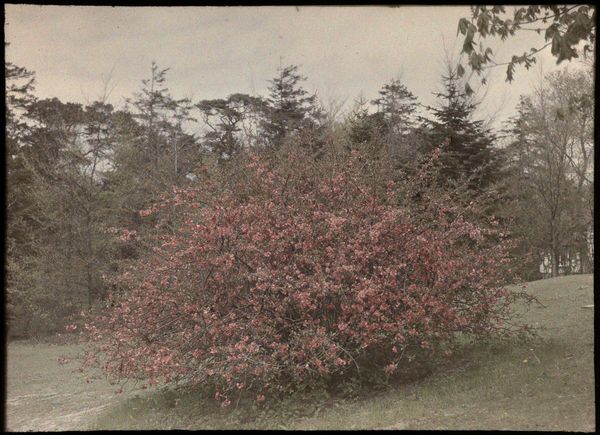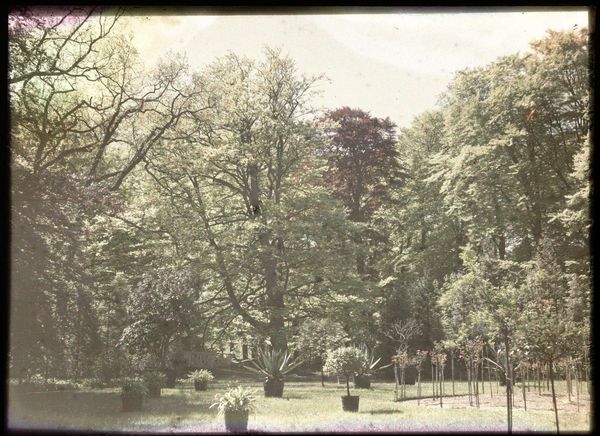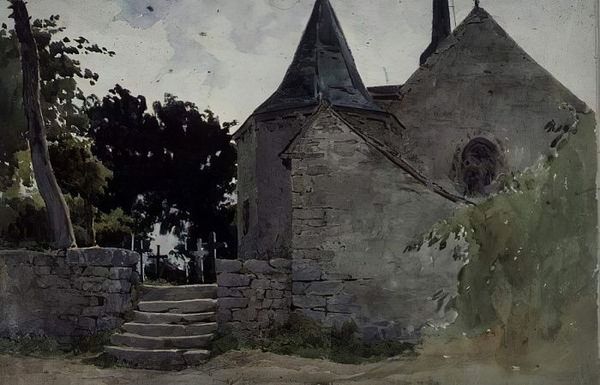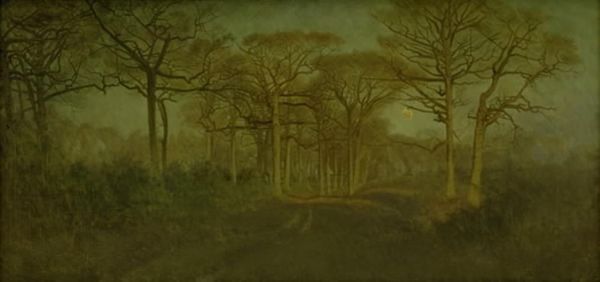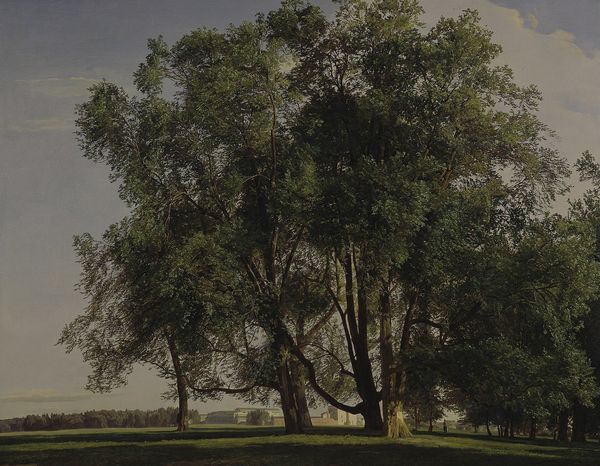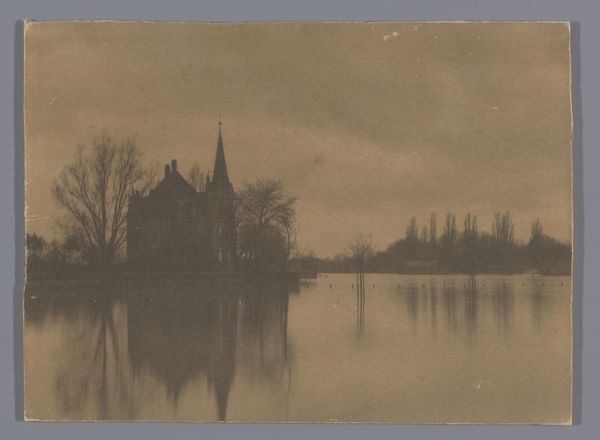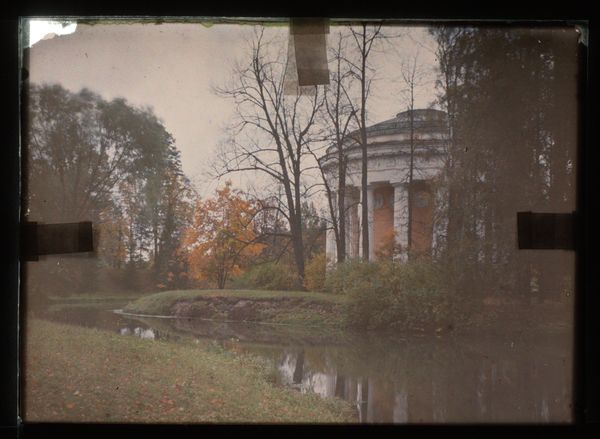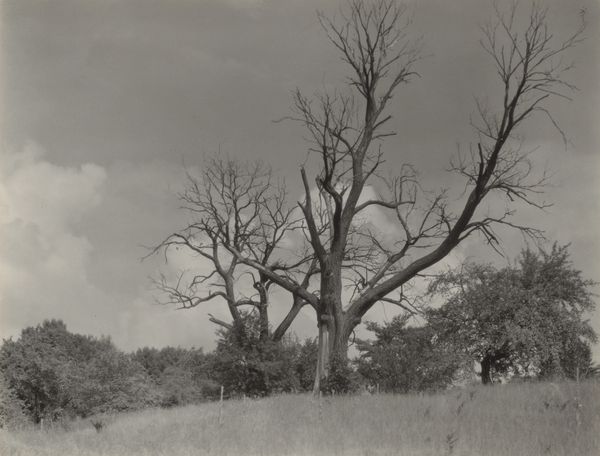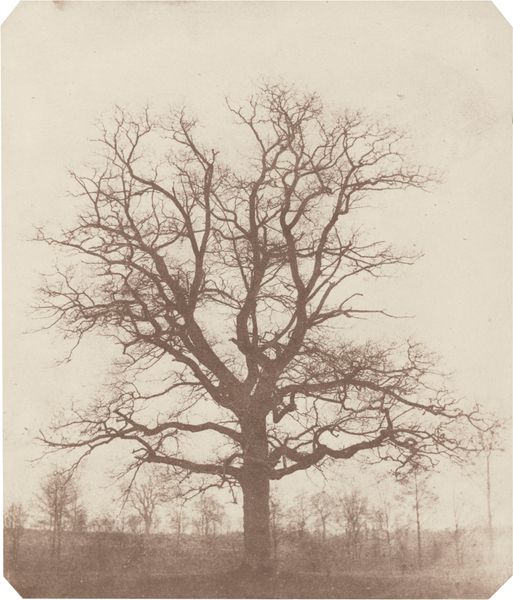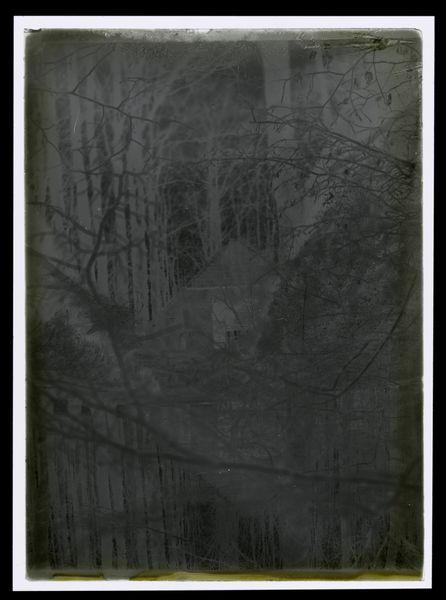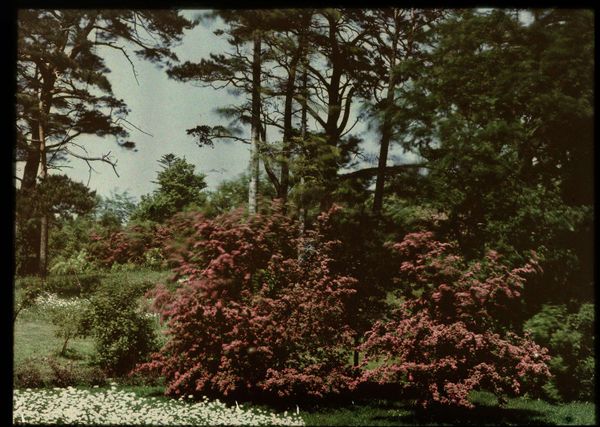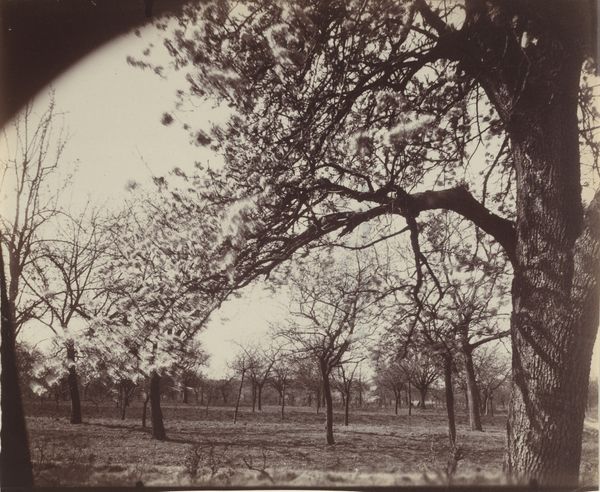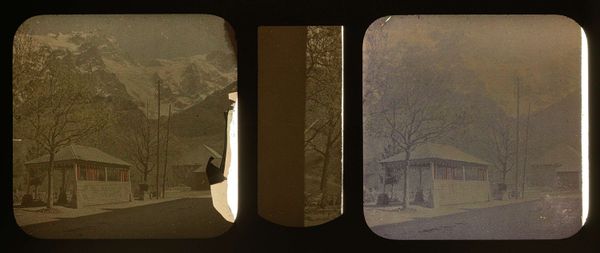
painting, plein-air
#
painting
#
plein-air
#
landscape
#
nature
#
watercolor
Dimensions: height 88 mm, width 119 mm
Copyright: Rijks Museum: Open Domain
Curator: Looking at this image, I’m struck by its melancholic stillness. The colour palette seems muted, the almost ghostly quality of the mansion barely visible. It feels caught between grandeur and decay. Editor: I find the way Adolphe Burdet handles this scene quite telling. Painted sometime between 1907 and 1930, and entitled "Gezicht op het landhuis Duinlust te Overveen," it gives us a look at both landscape painting and the economic context of estates at the time. This piece in the Rijksmuseum uses watercolor to produce its effects en plein-air, focusing on the facade in parallel to nature. Curator: So the Duinlust estate would have had connotations for the artist and those who would recognize it then. In some ways, the estate is receding from view, partially obscured by the large tree. Do you think that indicates a transition of power or perhaps changing perceptions of the wealthy at the time? The image also places the spectator at a remove from this luxurious site, hinting at larger social divides. Editor: Exactly. By depicting the natural materials like this in almost stark contrast with Duinlust's artificial ones, the symbolism shifts to expose both the material and social foundations that the upper class uses to set itself apart. Curator: But isn’t it more than just that contrast? Consider the symbolism of the estate itself—as an edifice of cultural memory and power. Notice its spires are framed almost perfectly between the spread of the old tree's branches and its aged bark; one would be remiss not to notice such imagery is an indicator that even structures built to assert permanence are subject to the passage of time. Editor: Certainly. However, I think its real trick is the technique: a focus on making an idyllic setting also a scene that prompts critique and makes viewers consider wealth at large as a constructed product that depends on labor for it all to happen. What a beautifully crafted means to that end! Curator: A fascinating consideration. I had focused more on the romanticized vision of loss, and now you’ve brought to the fore elements of the estate's making—quite literally built upon labor, now consumed by landscape. Editor: I think this artwork ultimately presents viewers with dual realities: an illustration of power but a view of those structures facing certain dissipation. Curator: Yes, an elegiac rendering of wealth, labor, and their complex relationships over time. Thank you for unveiling this reading for me.
Comments
No comments
Be the first to comment and join the conversation on the ultimate creative platform.
